6 Best Thunderbolt 3 External GPUs
Ever wondered if you can get desktop-level gaming performance from a laptop? Well thanks to Thunderbolt 3, you can with the use of an external GPU or eGPU for short.
An eGPU is a separate device that houses a graphics card. This device then connects to a laptop via Thunderbolt 3 and the laptop is then able to use the eGPU instead of its own onboard graphics to run games as well as other graphics-intensive programs.
The market for these devices is ever growing with many people seeing a lightweight laptop plus an eGPU as their preferred setup for not just gaming, but other tasks as well such as 3D modeling and computer-aided design. This guide looks at the perks of using an eGPU, what to consider when looking for an eGPU, and then goes on to compare the top eGPUs that are currently on the market.
| Budget |
|---|
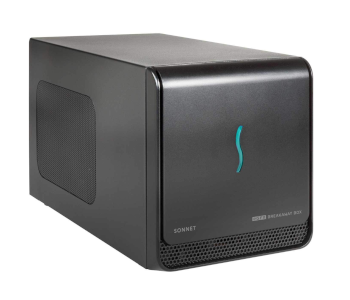 |
| Sonnet eGFX Breakaway Box |
| 4.4/5.0 |
| Type: Enclosure |
| Construction: Aluminum |
| This is low cost, no gimmicks, and just works. |
| Check Amazon |
| Best Value |
|---|
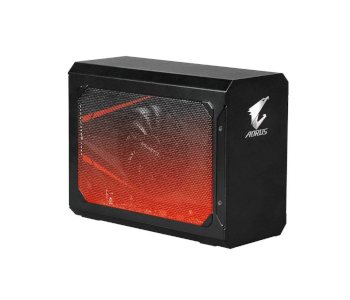 |
| Gigabyte Aorus Gaming Box |
| 4.1/5.0 |
| Type: Embedded |
| Construction: Aluminum |
| It comes with GPU and an easy to set up. |
| Check Amazon |
| Top Pick |
|---|
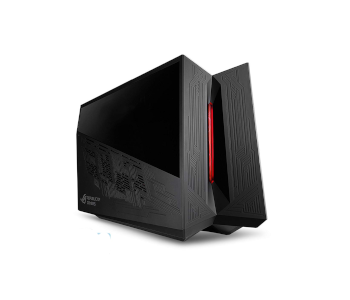 |
| ASUS ROG-XG-STATION-2 |
| 4.8/5.0 |
| Type: Enclosure |
| Construction: Plastic |
| Innovative design, great I/O options. |
| Check Amazon |
Why use an eGPU?
There are a number of reasons you may want to use an eGPU but the most popular reason tends to be so that you can run high-intensity games on a laptop. This is the dream for most people as it means they can use one device for everything, rather than needing to buy both a laptop and a gaming PC.
The solution to this problem for many years has been to purchase a gaming laptop instead. Gaming laptops, however, aren’t perfect as they usually struggle to keep cool under heavy loads. This is partly due to the internal graphics card getting hot, coupled with the fact that laptops are compact machines, meaning it is difficult to disperse heat efficiently.
eGPUs solve this problem by housing the graphics card outside of the laptop and providing it with its own dedicated cooling. Not only does this help keep the temperature of your laptop down but it also means you don’t need to invest in a bulky gaming laptop littered with RGB lighting.
Gaming laptops aren’t necessarily ugly but a lot of them look a bit out of place in a corporate office and, therefore, don’t really provide a good solution to people who want to use one device for everything. With an eGPU, however, you can use a slim, stylish ultrabook and still get high-end graphics performance when you need it, provided your laptop supports Thunderbolt 3 of course.
Things to consider when looking for an eGPU
Firstly, it is important to note that there are two types of eGPUs, embedded eGPUs, and enclosure eGPUS. Most tend to be the latter and this is a good thing as enclosures are a lot more versatile, allowing you to choose which graphics card you wish to use with your system.
Embedded eGPUs come with the graphics card already inserted and aren’t necessarily designed to modified or upgraded. Although this might be more appealing to you if you are a casual gamer, an enclosure offers the option of only having to upgrade the graphics card when needed rather than the whole device. Enclosures do require you to purchase a GPU separately though, which could mean a larger investment upfront.
You should also consider how much you plan to transport the eGPU. If it’s going to sit in one place all the time then you probably don’t need to worry about what material it is made out of, however, if you move around a lot, such as between hotels, you may want to consider an eGPU with an aluminum shell for increased durability. A handle is also something to look out for if you would like the device to be as portable as possible.
One of the downsides to using an eGPU is that even though Thunderbolt 3 provides the fastest connection in the world right now, you still won’t get quite as much performance as you would if the GPU was housed internally. The loss in performance is said to be around 10-15% which isn’t too concerning but it is still something worth mentioning.
External GPUs Comparison Table
| Make and Model | Type | I/O | Support | Price |
|---|---|---|---|---|
| Akitio Node Pro | Enclosure | 2 x Thunderbolt 3, 1 x DisplayPort | Full-length, full- height, double- width graphics cards | Check Price |
| OMEN by HP Accelerator Shell GA1-1000 | Enclosure | 1 x Thunderbolt 3, 1 x USB-C, 4 x USB 3.0, 1 Gigabit Ethernet | Any | Check Price |
| Razer Core V2 | Enclosure | 1 x Thunderbolt 3, 4 x USB, 1 x HDMI, 2 x DisplayPort, 1 x Gigabit Ethernet | Nvidia GeForce GTX 10-series and AMD XConnect enabled Radeon RX cards | Check Price |
| Gigabyte AORUS Gaming Box GTX 1070 | Embedded | 1 x Thunderbolt 3, 4 x USB, 1 x HDMI, 1 x DisplayPort | Nvidia GTX 1070 | Check Price |
| ASUS ROG-XG- STATION-2 | Enclosure | 1 x Thunderbolt 3, 1 x USB Type-B, 4 x USB 3.0, 1 x HDMI, 3 x DisplayPort, 1 x DVI, 1 x Gigabit Ethernet | Nvidia 9/10 series and later AMD Radeon R9, RX and later | Check Price |
| Sonnet eGFX Breakaway Box | Enclosure | 1 x Thunderbolt 3, 2 x HDMI, 2 x DisplayPort, 1 x DVI | All cards supported by 550, AMD Radeon Vega 64, Frontier Edition or WX9100 | Check Price |
1. Akitio Node Pro
Editor’s Rating: 4.4/5
The Akitio Node Pro is a stylish enclosure that has been developed primarily for use with a MacBook. This is evidenced by its Space Grey color scheme and aluminum chassis, so if you are a Macbook user who cares about design continuity across your devices, this is already a nice option.
As mentioned, the Akitio Node Pro is an enclosure style eGPU. This means that you have the option to use a wide variety of different graphics cards with the device. The laptop you have will play a part in this as you will need to be sure the card is compatible but generally speaking, enclosures are a much better way to go if you are after a fully tailored setup.
If you prefer devices that work straight out of the box, however, then you might want to give this one a miss. It doesn’t come with a GPU, meaning you will have to buy one separately and, therefore, you will also need to set the eGPU up yourself which can be a hassle if you have never done this sort of thing before.
I/O
The Akitio Node Pro comes with three ports. These include two Thunderbolt 3 ports and a DisplayPort. This isn’t the greatest selection of ports, with many eGPUs offering more but it does have two Thunderbolt 3 ports which is a bonus. One of these will, of course, be needed to connect the eGPU to your laptop but the other one can be used to charge devices as it provides a power delivery of up to 60w.
The DisplayPort can be used for passthrough between your laptop and monitor and it is something that is missing on the original Node. The DisplayPort is a great option to have, especially if you wish to keep your setup as clean as possible.
Construction
As mentioned the Node Pro is made from aluminum. This gives the device a decent level of durability which should be desired if you are planning to transport the device often.
There is also a retractable handle on top of the Node Pro that works really well and makes transporting the device a lot easier. Considering these devices are supposed to promote portability to a certain extent, it is surprising not to see more eGPUs equipped with handles, so props to Akitio for making sure to implement one on this device.
Support
The Node Pro is able to support most Nvidia and AMD graphics cards, but it cant house 3-slot wide GPUs. This isn’t a huge deal but it is something to be aware of if you are thinking of purchasing this device.
You should also be sure to check which cards your laptop is compatible with as this can often trip people up. For example, there is no official support currently available when it comes to using Nvidia cards with a Mac. There is now unofficial support though so it is possible with the right configuration.
Easily one of the better-looking eGPUs available. It is, however, a bit lackluster when it comes to I/O compared to the other eGPUs in this guide.
| Tech Specs |
|---|
| Type: Enclosure |
| I/O: 2 x Thunderbolt 3, 1 x DisplayPort |
| Construction: Aluminum casing, retractable handle |
| Support: Full-length, full-height, double-width graphics cards |
| The Pros |
|---|
| Versatile |
| Customizable |
| Allows for a tailored setup |
| Has a couple of different options for outputting video |
| Excellent durability |
| Easily portable |
| Will work with a large number of different graphics cards |
| The Cons |
|---|
| Requires purchasing a graphics card separately |
| Takes more time to set up |
| At least one HDMI would have been nice |
| Can’t house 3-slot wide GPUs |
2. OMEN by HP Accelerator Shell GA1-1000
Editor’s Rating: 4.8/5
The Accelerator Shell is another enclosure style eGPU. This means that just like with the Node Pro, you can choose from a wide range of different graphics cards to use, rather than being forced to use a specific GPU.
I/O
The Accelerator shell has an excellent range of ports that really put devices like the Node Pro to shame. For example, unlike on the Node Pro, the Accelerator Shell has four USB 3.0 ports which can, of course, be used for connecting various peripheral devices. On top of this are the Thunderbolt 3 port for connecting to a laptop, and a single USB-C port.
Unfortunately, this does mean that there is no second Thunderbolt 3 port which is a shame, however, plenty can still be achieved with USB-C, albeit at a slower pace. There is also no DisplayPort of any kind on the device which is surprising, but not the end of the world.
Construction
In terms of appearance, the HP Omen Accelerator Shell is certainly one of the more striking eGPUs on the market. Rather than adopting the traditional box design used by most manufacturers, HP has decided to turn the Accelerator Shell on its side like a diamond. This small change has drastically improved the appearance of the device and unlike other eGPUs, it doesn’t just look like a boring box sitting on a desk.
The device is made from a matte black plastic which isn’t going to be as durable as the aluminum cases being used on some of the other eGPUs but it should still provide a decent level of durability, especially if you aren’t planning to transport it between places very often.
Support
The Accelerator Shell is compatible with any graphics card that uses a PCIe interface, provided the card is no longer than 29cm in length. This places the Accelerator shell among the best on this list in terms of compatibility.
Another great thing about this device is that there is room for an extra hard drive, or solid-state drive in the shell as well. This can be used to store games or other media on in order to keep the storage on your main drive down, or it could simply be used as a backup.
There really isn’t a lot wrong with this device apart from one or two little things. The most obvious is the lack of a second Thunderbolt 3 port, but it would have also been nice to see some aluminum on the shell too. Aside from these small gripes though, the Accelerator Shell is pretty much perfect.
| Tech Specs |
|---|
| Type: Enclosure |
| I/O: 1 x Thunderbolt 3, 1 x USB-C, 4 x USB 3.0, 1 Gigabit Ethernet |
| Construction: Plastic casing, large access door, stand |
| Support: Any |
| The Pros |
|---|
| Versatile |
| Customizable |
| Allows for a tailored setup |
| Four USB ports for peripherals |
| Includes an Ethernet port |
| Decent durability |
| Easy to install graphics cards |
| The stand gives the device a lot of stability |
| Will work with a large number of different graphics cards |
| The Cons |
|---|
| Requires purchasing a graphics card separately |
| More work involved to set-up |
| No HDMI ports |
| No DisplayPorts |
| No extra Thunderbolt 3 ports |
| Aluminum would have been preferred |
3. Razer Core V2
Editor’s Rating: 4.6/5
The Razer Core V2 is an enclosure style eGPU that has been designed primarily to be used with Razers own brand of gaming laptops. This doesn’t mean that it won’t work with any other laptops though, it’s just that in terms of design it mimics the theme of Razers other products.
I/O
The selection of ports on this device is great with four USB ports, an HDMI port, two DisplayPorts, and a full-size Ethernet port on top of the single Thunderbolt 3 port. Although there is no second Thunderbolt 3 port on this device, the number of other ports it has means that it can double up as a dock as well, depending on your needs.
This makes it possible to achieve somewhat of a one cable setup, as you can connect all of your peripherals to the Razer Core instead, and then simply disconnect the one Thunderbolt 3 cable from your laptop when you need to take it elsewhere.
Construction
The Razer Core V2 is made from aluminum and it has been finished off in the same anodized stealth black used on Razers Blade laptops. It also doesn’t have the same basic square shape that a lot of other eGPUs have. The device is slightly larger than the first generation Razer core though, but this to accommodate larger GPUs so it can be considered a fair trade-off.
The left side of the device also features a metallic grill that allows you to the GPU inside and there is venting running up the front and back of the device to keep it cool. The fans in this device have been known to kick up quite a lot though and they can get quite loud. This might not be an issue for you but many people find fan noise very irritating.
The Core V2, therefore, has quite an interesting appearance and it looks a little more interesting than a simple black box. There is also RGB lighting on the device as well, because it is a gaming device after all.
Support
The Core V2 is able to accommodate a wide variety of GPUs from both AMD and Nvidia. Compatibility will vary though depending on which laptop you have and it is important to note that the Core V2 will not work with any laptop just because it has Thunderbolt 3.
This isn’t a fault of the Core V2, but not all laptops support external graphics, so be sure to check before purchasing the Razer Core or any other eGPU. Generally speaking though, the Core V2 is fairly easy to set up and as long as everything is compatible and you have the right drivers, it shouldn’t take too long to get it all working.
A nice looking eGPU with some decent connectivity specs. There isn’t really a lot wrong with this device, aside from the fact it is too small to house certain GPUs.
| Tech Specs |
|---|
| Type: Enclosure |
| I/O: 1 x Thunderbolt 3, 4 x USB, 1 x HDMI, 2 x DisplayPort, 1 x Gigabit Ethernet |
| Construction: Aluminum |
| Support: Nvidia GeForce GTX 10-series and AMD XConnect enabled Radeon RX cards |
| The Pros |
|---|
| Versatile |
| Customizable |
| Allows for a tailored setup |
| Plenty of options for outputting video |
| Four USB ports for peripherals |
| Allows for a possible one cable connection from a laptop |
| Excellent durability |
| Fairly compact |
| Will work with a large number of different graphics cards |
| The Cons |
|---|
| Requires purchasing a graphics card separately |
| More work involved to set-up |
| An extra HDMI port would have been nice |
| No second Thunderbolt 3 port |
| No handle |
| Can’t house 3-slot wide GPUs |
4. Best Value: Gigabyte AORUS Gaming Box GTX 1070
Editor’s Rating: 4.1/5
The Gigabyte Aorus Gaming box is the first and only embedded eGPU in this guide. This means it offers something slightly different to the other devices on this list and depending on what you want from an eGPU, it might be a better option.
As an embedded system, it comes with its own dedicated GPU and this model, in particular, ships with a GTX 1070. This is a very capable graphics card and if you are gaming at 1080p it will run pretty much anything with a high frame rate. As the GPU is preselected though, it does mean you could run into compatibility issues, which is something to be aware of.
I/O
The I/O for this device is pretty good, offering a similar selection of ports to HPs Accelerator Shell. The difference with the Gaming Box though is that instead of the USB-C and Ethernet ports, you get an HDMI port and a DisplayPort.
Clearly then, the Gaming Box is far more concerned with how you are connecting to a monitor and it is great to see different options for video passthrough implemented on this device. It does also have four USB ports though, allowing you to connect peripherals as well.
One downside to having only one HDMI port and one DisplayPort though is that it can make dual monitor setups tricky, especially if your monitors both use the same port. In this scenario, you might find yourself needing to purchase an adapter cable or some sort of splitter, which isn’t ideal.
Construction
The Gaming Box is made from aluminum and it feels very solid and durable. The sides of the device also have a mesh grill, allowing you to see the GPU inside, similar to the Razer Core V2. This grill also helps with ventilation. It is always good to see devices implementing functional design features in a stylish way and Gigabyte has done that expertly here.
Support
As the Gaming Box is an embedded system it, of course, only supports one GPU. As mentioned previously, this is a Geforce GTX 1070. The support, therefore, cannot be considered good compared to the other devices on this list. The plus side to having this type of system though is that it makes the setup process a lot simpler.
The device isn’t as futureproof compared to enclosures either. Although the GTX 1070 will be usable for a long time, it will one day become obsolete and rather than just swapping the card for a new one, the whole unit will have to be replaced with something else.
For the right person, this is a decent device. However, its limitations are likely to deter a lot of people as an embedded system isn’t as futureproof as an enclosure.
| Tech Specs |
|---|
| Type: Embedded |
| I/O: 1 x Thunderbolt 3, 4 x USB, 1 x HDMI, 1 x DisplayPort |
| Construction: Aluminum |
| Support: Nvidia GTX 1070 |
| The Pros |
|---|
| Minimal set up required |
| No need to purchase graphics card separately |
| Plenty of USB ports |
| Comes with graphics card already embedded |
| The Cons |
|---|
| Less versatility |
| Fewer customization options |
| Not as future-proof |
| An extra HDMI port and DisplayPort would have been nice |
| GTX 1070 doesn’t allow 4K at 60fps |
5. Top Pick: ASUS ROG-XG-STATION-2
Editor’s Rating: 4.8/5
The ASUS ROG-XG-STATION-2 is one of the craziest looking eGPUs on the market. The other devices on this list have taken quite a conservative approach in terms of appearance, with the exception of maybe the HP Accelerator Shell, but the XG-Station hasn’t held back at all. Instead, it looks like it could something that could have fallen off an alien spacecraft for all we know.
It is an enclosure style eGPU, meaning that unlike with the Aorus Gaming Box, you have plenty of options available to you in terms of which graphics card you wish to use. It also means the device is a lot more futureproof as only the GPU needs to be replaced when it becomes obsolete.
I/O
The I/O for this device is by far the best on this list, beating even the Razer Core V2 and HP Accelerator Shell. There are so many ports on this device that it could easily be used as a docking station as well as an eGPU. This is great as it means you can keep your desk fairly tidy, as you won’t need to litter it with different adapters.
There is only one Thunderbolt 3 port though which is both surprising and disappointing, given how much space ASUS had to include other ports. Still, with the wide variety of ports it does have, you shouldn’t have many issues trying to connect other devices.
Construction
The one disappointing aspect of this device is that it is made from plastic. Although eGPUs generally shouldn’t be in the firing line for too much punishment, they have been designed with the view to being transported from time to time. Therefore, it would make sense to use a more durable material for the outer casing, such as aluminum. The XG-Station will is still durable, just not as durable as it could be.
The great thing about this device in terms of construction though is the way it opens. There is a small lever on the top of the device that once pulled, releases the sides of the device so that they can be pulled down on either side. Once you have done this, you will be able to access all of the internal parts of the eGPU, including the graphics card.
This is easily one of the implementations seen so far on en eGPU and hopefully, other manufacturers will think about doing something similar in the future. The appearance of the XG-Station will likely divide opinion but the mechanism it uses to grant access to the GPU is exceptional.
Support
The XG-Station is able to house all Nvidia 9/10 series cards and above as well as AMD’s Radeon R9, RX, and later models. This is pretty good and it means the device will work with most high-end cards.
As usual, you will need to check your laptop is also compatible. The XG-Station has been designed primarily to work with ASUS ultrabooks books this doesn’t mean it is incompatible with other laptops. It just means you will need to your laptops supports it before making the investment.
The only things stopping this device getting a perfect rating are the plastic shell and the lack of a second Thunderbolt 3 port. Other than that, it is flawless, provided the look of the device appeals to you.
| Tech Specs |
|---|
| Type: Enclosure |
| I/O: 1 x Thunderbolt 3, 1 x USB Type-B, 4 x USB 3.0, 1 x HDMI, 3 x DisplayPort, 1 x DVI, 1 x Gigabit Ethernet |
| Construction: Plastic, easy access design |
| Support: Nvidia 9/10 series and later AMD Radeon R9, RX and later |
| The Pros |
|---|
| Versatile |
| Customizable |
| Allows for a tailored setup |
| Plenty of USB ports |
| Ethernet port included |
| Fairly durable |
| Easy to access the graphics card |
| Compatible with most high-end graphics cards |
| The Cons |
|---|
| Requires purchasing a graphics card separately |
| More work involved to set-up |
| An extra HDMI port would have been nice |
| An aluminum casing would have been preferred |
6. Best Value: Sonnet eGFX Breakaway Box
Editor’s Rating: 4.4/5
The Sonnet eGFX Breakaway box is a superb device for those of you who are looking for something that just works. It doesn’t have any gimmicky RGB lighting or a fancy design features but it does do its job of providing additional graphics power very well.
It is an enclosure style eGPU, so you have the option of choosing your own graphics card and tailoring your setup to suit your needs. This does, of course, require more work initially to set up, but it does mean the device is upgradable, removing the need to replace the whole device if the GPU becomes obsolete.
I/O
The connectivity of this device is pretty good especially when it comes to outputting video. Unlike on a lot of the devices in this guide, a lot of attention has been given to video outputs and there are multiple HDMI ports as well as DisplayPorts. There is also a DVI port which is something not yet seen from the other eGPUs.
The downside is that there are no USB ports meaning you won’t be able to connect your peripherals directly to the eGPU. There is also no second Thunderbolt 3 port. Without either of these things, you are essentially forced to use the ports on your laptop or invest in a dock. This isn’t the end of the world but it does mean a one cable setup isn’t really possible with this device.
Construction
The construction of this device is also very good. It has an aluminum shell unlike some of the other devices in this guide and it is also fairly compact and well ventilated. The fans are also said to be among the quietest of any eGPU, which is an added bonus.
There is, however, no handle on the Breakaway box. This isn’t too significant but it may impact its portability somewhat. The device is still very durable though so you should have no worries about transporting it from one location to another.
There is also one downside in terms of aesthetics as you can’t see much of what’s going on inside the device. This doesn’t affect the performance of the Breakaway Box in any way, but it is quite nice that on some of the other devices, you can see the GPU and the fans working while in use.
Support
The Breakaway Box supports a wide variety of different graphics cards, meaning you shouldn’t run into too much trouble when choosing your desired GPU. The device doesn’t support every graphics card though so you should still be sure to check first, and as always, it is important to make sure your laptop is also compatible.
It might not be too fancy but it performs its job very well and in terms of construction it trumps some of the best eGPUs on this list.
| Tech Specs |
|---|
| Type: Enclosure |
| I/O: 1 x Thunderbolt 3, 2 x HDMI, 2 x DisplayPort, 1 x DVI |
| Construction: Aluminum |
| Support: All cards supported by 550, AMD Radeon Vega 64, Frontier Edition or WX9100 |
| The Pros |
|---|
| Versatile |
| Customizable |
| Allows for a tailored setup |
| Various options for outputting video |
| Great durability |
| Well ventilated |
| Compatible with a lot of different graphics cards |
| The Cons |
|---|
| Requires purchasing a graphics card separately |
| More work involved to set-up |
| A few extra ports would have been nice |
| No handle |
Contents
- Why use an eGPU?
- Things to consider when looking for an eGPU
- External GPUs Comparison Table
- 1. Akitio Node Pro
- I/O
- Construction
- Support
- 2. OMEN by HP Accelerator Shell GA1-1000
- I/O
- Construction
- Support
- 3. Razer Core V2
- I/O
- Construction
- Support
- 4. Best Value: Gigabyte AORUS Gaming Box GTX 1070
- I/O
- Construction
- Support
- 5. Top Pick: ASUS ROG-XG-STATION-2
- I/O
- Construction
- Support
- 6. Best Value: Sonnet eGFX Breakaway Box
- I/O
- Construction
- Support

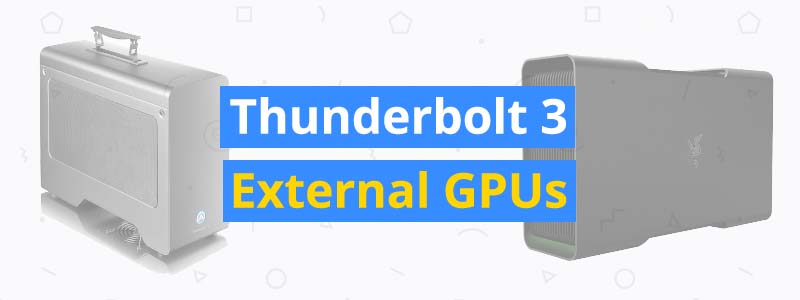
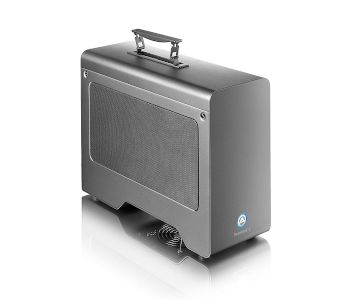

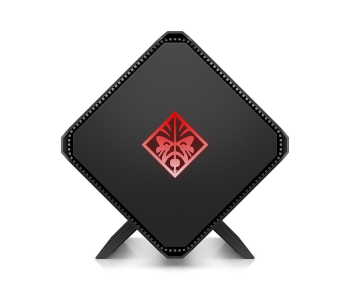
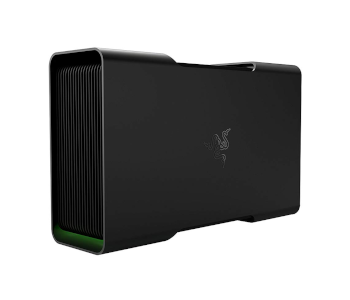
why would Egpu’s without included graphics cards need display outputs?
if your instaling a GPU just plug your displays into it, even gives you lower latency since the image doesn’t need to be sent back to the Laptop and back before it gets to the display, and better performance since it leaves all the bandwidth to the GPU.
Altso the akitio node pro has 2 ports manly for daisy-chaining witch is a feature of thunderbolt 3, it probably meant for attaching something like a thunderbolt 3 dock for that one-cable solution, it can also only provide the 60Wats to a single Thunderbolt port at a time.
Linus Tech Tips has a great video showing the Nodes Pro potential.
https://www.youtube.com/watch?v=G2VxwFEA8xM